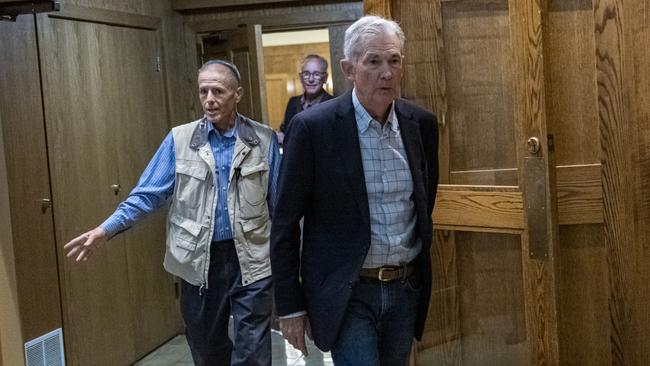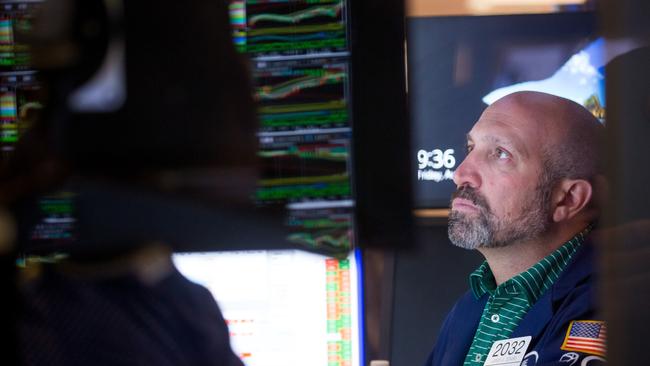
The words became the exemplar of effective central bank communication.
In the weeks after his remarks in July 2012, yields on Italian and Spanish bonds magically began to fall back to manageable levels. Another European debt crisis had been averted.
Federal Reserve chairman Jerome Powell, the world’s most influential central banker, had his “whatever it takes” moment last week in Jackson Hole, Wyoming, which since the early 1980s has hosted the exclusive annual conference of central bankers and economists.
Whatever the causes, and whatever the costs, he and the Fed would get inflation back from almost double-digit levels to 2 per cent, the central bank’s target, sooner rather than later.
It is unlikely, however, Mr Powell’s words will be as successful as Mr Draghi’s.
“We must keep at it until the job is done,” Mr Powell said, twice, in his unusually short – at just eight minutes – remarks that prompted a plunge in US share prices, as investors factored in the higher likelihood of higher interest rates for longer.
The Fed chairman even downplayed hopes for a “soft landing”, explicitly warning households and businesses to brace for “some pain” as the central bank ratchets up its benchmark interest rate in a bid to crush inflation.
“These are the unfortunate costs of reducing inflation. But a failure to restore price stability would mean far greater pain,” Mr Powell added. Watch out for a hard landing, in other words.
The Fed lifted its key interest rate by a sizeable 0.75 percentage points in each of its previous two meetings, bringing its benchmark rate to 2.5 per cent, and is poised to do so again when it considers monetary policy settings in late September.
Mr Powell had one task at the conference: to dispel speculation the Fed would back away from earlier promises to lift interest rates dramatically, amid signs inflation had already started to slow, and even start cutting them.
“A single month’s improvement falls far short of what the committee will need to see before we are confident that inflation is moving down,” Mr Powell said, referring to the fall in inflation from 9.1 per cent in June to 8.5 per cent in July.
“Our responsibility to deliver price stability is unconditional,” he said, stressing the importance of acting before households’ and businesses’ inflation expectations, which critically affect the actual rate, begin to rise.
Mr Powell has a more challenging task ahead than Mr Draghi did.

The surge in inflation is a global phenomenon – it’s even higher in the UK, for instance – suggesting the Fed alone might not be able to wrench inflation back to zero in the US, at least without causing a major recession.
And in the US the Biden administration is revving the economy up, including an estimated $300bn ($435bn) in student loan forgiveness, the opposite of what Mr Powell would like.
The war between Russia and Ukraine shows no sign of a resolution, foreshadowing many more months, even years, of heightened uncertainty hanging over the global economy, especially in energy markets, which will tend to make prices higher
The Russian invasion has provided another powerful illustration, after the pandemic led to the collapse of travel and trade, of the folly of relying too much on global supply chains.
The unravelling of globalisation, which had begun to retreat even before the pandemic emerged in early 2020, is bound to accelerate, putting additional upward pressure on prices as governments seek to bring production of critical goods back home, even if it costs more to produce them.
At the same time, the Baby Boomers are beginning to retire in the developed world, putting upward pressure on wages as the working age sector of the population shrinks.
Finally, governments, especially in the English-speaking countries, have drastically increased their debt throughout the pandemic, making them awfully sensitive to higher interest rates.
Central banks, nominally independent, will come under pressure from their political masters as higher interest rate push up unemployment and the cost of budget deficits.
Mr Powell was wise not to include any specific timelines or thresholds in his “keeping at it until the job’s done” pledge, unlike Reserve Bank governor Philip Lowe, who had to embarrassingly retract an earlier promise to keep interest rates at 0 until 2024.
Bond yields moved higher after Mr Powell’s speech on Friday, and the US blue chip stocks shed more than 3.3 per cent, but investors don’t believe the Fed will lift interest rates much further anyway, despite the hard-nosed rhetoric.
Prices in the bond market suggest the benchmark interest rate in the US will reach a maximum of 3.5 per cent by March next year, before gradually lowering it again. Mr Powell would certainly be hoping 3.5 per is what it takes to get inflation down.







A decade ago, the then European Central Bank governor Mario Draghi declared he would do “whatever it takes” to save the euro – including bailing out struggling governments whose borrowing costs were rising to unsustainable levels.